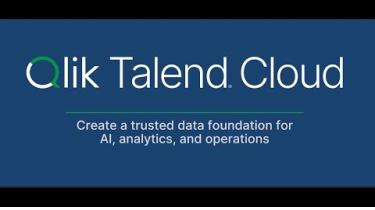
In the dynamic world of business, the strength and flexibility of your supply chain are crucial. The landscape has shifted dramatically, marked by rapid changes and challenges that test the limits of supply chain resilience. It's a journey that requires not just adaptation but foresight, innovation, and strategic planning. Here's how the collaboration between Qlik and Inside Info can be the cornerstone of a strong supply chain strategy, ensuring your business thrives.
The Backbone of Modern Supply Chains
At the heart of a resilient supply chain is the ability to anticipate, adapt, and respond promptly to changes. This agility is grounded in data - that informs decision-making. Qlik, with its cutting-edge analytics and data integration capabilities, offers a powerful toolset to harness this resource. From real-time visibility into logistics to predictive analytics for forecasting demand, Qlik empowers businesses to navigate the complexities of today's supply chain environment.
Leveraging Inside Info's Expertise for Strategic Risk Mitigation
Complementing Qlik's technological prowess is Inside Info's extensive experience in the supply chain domain. With a deep understanding of the intricacies and challenges specific to supply chain management, Inside Info brings a hands-on approach to implementing tailored solutions. Their expertise not only lies in deploying the right tools but also in optimising processes and strategies to enhance efficiency, reduce risks, and ultimately, bolster resilience.
Harnessing the Power of Data Analytics for Enhanced Resilience
At the core of a resilient supply chain is informed decision-making. Qlik's intuitive dashboards provide a comprehensive overview of the supply chain, highlighting key metrics and insights. This, coupled with Inside Info's strategic guidance, empowers decision-makers to take proactive steps, ensuring their supply chain is not only efficient but also aligned with the overall business strategy. Here are some key points on how to achieve this:
- Real-Time Visibility: Utilise data analytics to gain real-time insights into every aspect of the supply chain, from inventory levels and supplier performance to transportation logistics. This visibility enables quicker responses to disruptions or changes in demand.
- Predictive Analytics: Implement predictive analytics to forecast future trends, demand, and potential disruptions. By analysing historical data, businesses can identify patterns and predict issues before they occur, allowing for proactive measures.
- Risk Identification and Management: Use analytics tools to systematically identify and assess risks throughout the supply chain. This includes evaluating supplier reliability, geopolitical risks, and the potential impact of natural disasters. With this information, develop strategies to mitigate these risks, such as diversifying suppliers or increasing inventory buffers for critical components.
- Supplier Performance Analytics: Analyse supplier data to monitor performance, compliance, and risk levels. This helps in making informed decisions about which suppliers to develop, monitor more closely, or possibly replace.
- Demand Planning and Forecasting: Leverage advanced analytics to improve demand forecasting accuracy. By understanding market trends, consumer behaviour, and external factors affecting demand, businesses can better align their supply chain operations with actual market needs.
- Inventory Optimisation: Use analytics to optimise inventory levels, reducing the cost of excess inventory while ensuring sufficient stock to meet demand. Data-driven insights can help determine the optimal inventory levels for different products and locations.
- Supply Chain Segmentation: Analyse your supply chain to segment suppliers, customers, and products based on various criteria such as risk, value, and demand volatility.
- Process Automation and Efficiency: Implement data analytics to identify bottlenecks and inefficiencies within the supply chain processes. Automation and process improvements can reduce lead times, lower costs, and improve service levels.
- Collaborative Networks: Sharing data and insights can improve forecasting, reduce inefficiencies, and strengthen the entire network against disruptions.
- Continuous Learning and Adaptation: Establish a feedback loop where supply chain performance data is continually analysed to learn from past disruptions and successes.
Future-proofing Your Supply Chain
The future of supply chain management lies in proactive strategies. The combination of Qlik's predictive analytics and Inside Info's strategic planning enables businesses to not only navigate the present but also to prepare for the future. By understanding trends, forecasting potential challenges, and planning accordingly, businesses can build supply chains that are adaptable to future shifts in the global business environment.
Strengthen your supply chain strategy today and prepare your business for a future where resilience is the key to success. Speak to us to find out how we can help on your data analytics journey.



